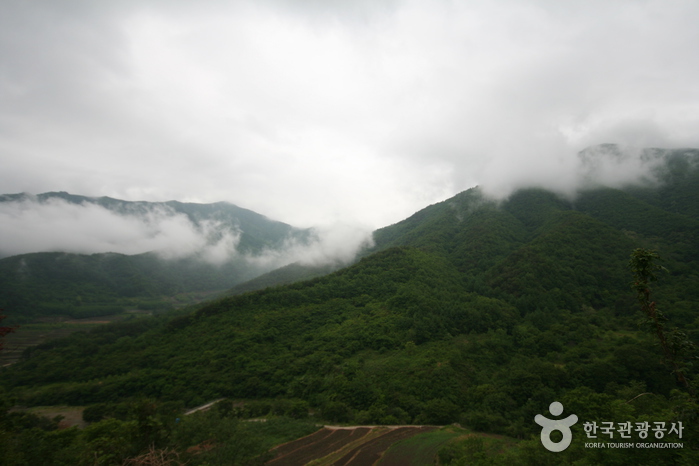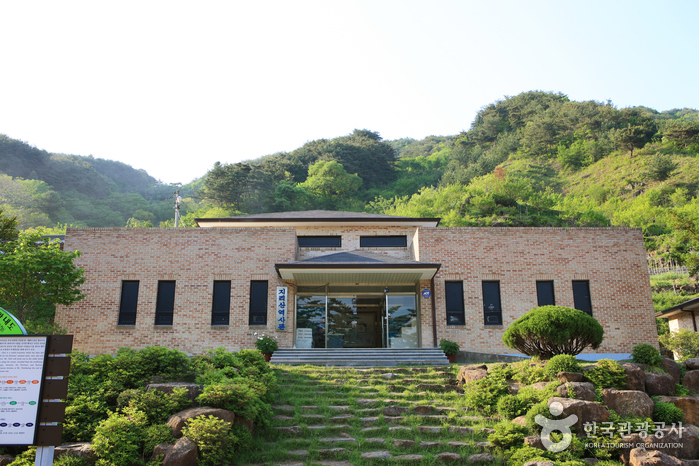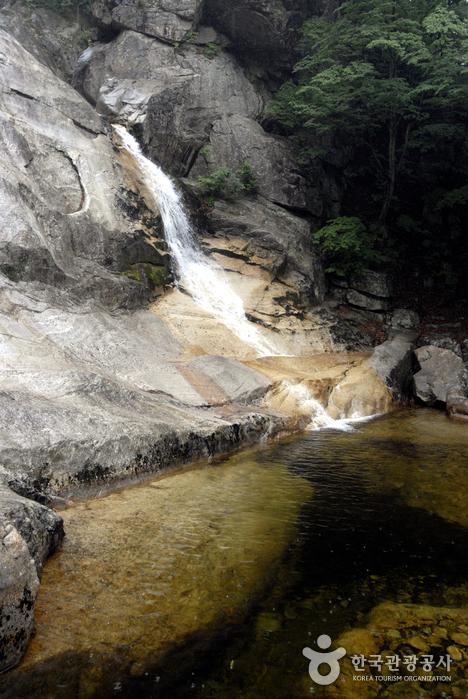Jirisan National Park (Sancheong) (지리산국립공원(산청))
15.8Km 2025-03-28
320-2 Jirisan-daero, Sicheon-myeon, Sancheong-gun, Gyeongsangnam-do
+82-55-970-1000
* Please be advised that this is located in one of the areas affected by the recent wildfire (as of March 27, 2025).
** For real-time wildfire information and emergency upates, visit the Korea Forestfire Information website and the National Disaster and Safety Portal.
Jirisan National Park is the first national park established in South Korea, featuring peaks like Cheonwangbong Peak (1,915m), Banyabong Peak, and Nogodan Peak, which rank as the next highest after Halla Mountain. It's a popular destination for mountain enthusiasts, offering beautiful natural landscapes such as Naewonsagyegok Valley. The park also provides convenient facilities like Jirisan Recreational Forest, Naewonsa Temple, mountain lodges, campgrounds, and pensions.
Jirisan Cheonwangbong Peak (지리산 천왕봉)
16.1Km 2025-03-28
Jirisan-daero, Sancheong-gun, Gyeongsangnam-do
+82-55-970-1000
* Please be advised that this is located in one of the areas affected by the recent wildfire (as of March 27, 2025).
** For real-time wildfire information and emergency upates, visit the Korea Forestfire Information website and the National Disaster and Safety Portal.
Along with Geumgangsan Mountain and Hallasan Mountain, Jirisan Mountain is known to be one of the most sacred mountains in Korea. It was named "Jiri" because it was believed to be a place that turns the innocent into the wise. On December 29, 1967 Jirisan National Park was declared the nation’s first and biggest national park. Its 440.517 square kilometer area covers Hadong, Sancheon and Hamyang in Gyeongsangnam-do; Gurye in Jeollanam-do ; and Namwon in Jeollabuk-do region. The total area is seven times that of Gyeryongsan National Park and 52 times that of all of Yeouido Island in Seoul.
At 1,915.4 meters high, Cheonwangbong Peak is the second highest peak in Jirisan National Park. Countless valleys and waterfalls surround the peak, as well as trails connecting to other peaks within the park.
Baemsagol Jirisan Sikdang (뱀사골 지리산식당)
16.3Km 2024-04-07
271 Jirisan-ro, Sannae-myeon, Namwon-si, Jeonbuk-do
+82-63-626-8800
Baemsagol Jirisan Sikdang specializes in baeksuk (whole chicken soup) and heukdwaeji gui (grilled black pork). They prepare healthy dishes using wild vegetables and traditional Korean medicinal ingredients collected from Jirisan Mountain. In addition to bibimbap and acorn jelly salad, they also offer dishes like grilled deodeok. Visitors can also enjoy their meals on the outdoor tables set up by Dalgunggyegok Valley.
Suseonsa Temple (수선사)
16.4Km 2024-02-23
1117 Nae-ri, Sancheong-eup, Sancheong-gun, Gyeongsangnam-do
Suseonsa Temple is a temple situated on Ungseokbong Peak in Jirisan Mountain. Renowned for its picturesque hydrangea and lotus, it has become a favored destination for many visitors. The temple offers a temple stay program, allowing participants to restore both body and mind. Nearby, the café run by Suseonsa Temple provides a pleasant retreat, adding to the enjoyment of visitors' experiences.
Jirisan History Museum (지리산역사관)
17.4Km 2021-06-15
1438, Hwagae-ro, Hadong-gun, Gyeongsangnam-do
+82-55-880-2954
Jirisan History Museum is located within Jirisan National Park at the start of the hiking course to Byeoksoryeong Pass. Rather a small museum, it provides detailed information about the history of North Korean partisans and the routes that they took throughout the mountain during the Korean War. The museum also exhibits the war relics, lifestyle of the mountain villagers and local produce of Hadong.
Jirisan National Park (Namwon) (지리산국립공원(남원))
17.9Km 2024-04-07
255 Jeongnyeongchi-ro, Jucheon-myeon, Namwon-si, Jeonbuk-do
+82-63-630-8900
Jirisan National Park is the second-highest mountain in South Korea, standing at an elevation of 1,915 meters, spanning across the provinces of Gyeongsang-do and Jeolla-do. Revered as a sacred mountain alongside North Korea's Baekdusan Mountain, it is home to the Asiatic Black Bear and features numerous peaks, including Cheonwangbong Peak. In spring, various flowers such as Royal Azalea bloom, while lush forests thrive in summer, vibrant foliage adorns the landscape in autumn, and the winter scenery boasts snow-covered peaks and icy landscapes.
Jirisan Manbokdae Peak (지리산 만복대)
18.8Km 2021-02-05
Sandong-myeon, Gurye-gun, Jeollanam-do
+82-61-780-7700
Manbokdae Peak in the west soars at the boundary between Sandong-myeon, Gurye-gun and Namwon-si at 1,433.4 meters above sea level. ”Man” means “full of something” and “bok” means “fortune.” Like the name, Manbokdae is considered as a fortunate mountain with great views as it is surrounded by smooth hills. According to an old story, Manbokdae Peak was chosen as one of the 10 scenic areas, where people come to receive good fortune.
Guryonggyegok Valley (구룡계곡)
19.7Km 2024-04-07
Guryongpokpo-gil, Namwon-si, Jeonbuk-do
+82-55-972-1000
Guryonggyegok Valley, a 3 kilometer-long valley in the northern part of the Jirisan National Park, located in Namwon, Jeollabuk-do, is just the place to enjoy a panoramic view of the unusually shaped rocks and precipitous cliffs. Under the Guryongpokpo Falls, located at the peak of the valley, is a small pond called, ‘Yongso’ (meaning ‘dragon pond’). Legend has it that a dragon lived here before it ascended to heaven. Visitors can tour the valley by driving along the skyway, an extension of the tourist road of Jirisan Mountain, or take an invigorating hike up a mountain by taking the Jeongnyeongchigan route, which extends along the valley to Baemsagol Valley(Banseon) and Nogodan Peak.




 English
English
 한국어
한국어 日本語
日本語 中文(简体)
中文(简体) Deutsch
Deutsch Français
Français Español
Español Русский
Русский